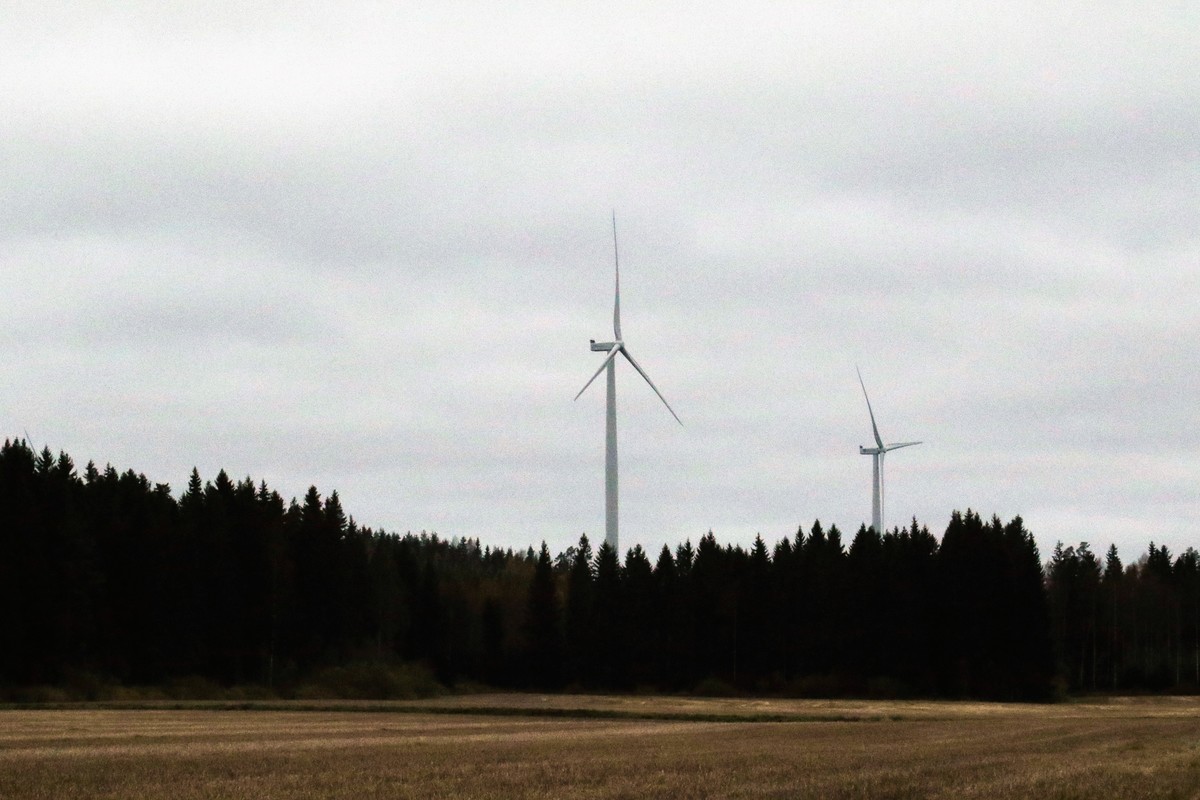19.4 Renewable energy sources
Because the supplies of fossil fuels are limited, and because their use accelerates climate change, the methods of energy production on our planet need to change. One way to make energy production more sustainable is to base it on the use of renewable energy sources. These energy sources replenish themselves when they are used. This means that they will never run out.
Bioenergy is the most important renewable energy source in Finland. In bioenergy, heat or electricity is produced by burning plant-, animal-, or microbe-based materials. Burning wood in a fireplace is a well-known example of bioenergy. Biogenic materials or biomass can nowadays be refined into other forms, as well. For example, biomass can be used to produce liquid fuels such as biodiesel. Biogas is produced in landfills and sewage treatment plants. It is used especially in heating.
In water power or hydropower, running water is directed through electricity-generating turbines. This process is based on solar radiation, as rivers are formed when the Sun causes water to evaporate and rain back down to the surface of the Earth. Water power is currently the most significant renewable energy source in the world. Approximately 7 % of the planet's total energy consumption is covered by water power. It is the second most important renewable energy source in Finland, providing almost one fifth of the nation's total energy production.
In wind power, electricity is produced with generators. These generators are rotated by the wind, which itself occurs as a result of solar radiation. In Finland, wind power is popular especially in shore regions. Wind power plants are easy and cheap to build, but they are not dependable alone, as they are reliant on wind.

Wind power plants in Jokioinen, Finland.
Geothermal heat and other similar forms of energy are also based on energy that has originally arrived on the planet from the Sun. In these methods, heat from water or air is used to produce heat energy. Geothermal energy, on the other hand, uses the heat contained inside the planet to produce energy. Geothermal energy has traditionally been used especially in volcanic areas, such as Iceland, but its popularity is steadily growing in other regions, as well.
Most forms of renewable energy gain their energy from radiation from the Sun. This radiation can be directly transformed into electricity or used in heating water for service use. The use of solar radiation in energy production is called solar energy. Only one percent of global energy production is currently based on solar energy, but it is the fastest-growing form of energy production in the world. Finland is not the best place in the world for solar energy production because of the long, dark winter. However, solar panels are popular mode of energy production in many Finnish summer houses. They can also be installed on top of buildings to heat up water for domestic use.

Solar power is the fastest-growing renewable energy source in the world.
Bioenergy is the most important renewable energy source in Finland. In bioenergy, heat or electricity is produced by burning plant-, animal-, or microbe-based materials. Burning wood in a fireplace is a well-known example of bioenergy. Biogenic materials or biomass can nowadays be refined into other forms, as well. For example, biomass can be used to produce liquid fuels such as biodiesel. Biogas is produced in landfills and sewage treatment plants. It is used especially in heating.
In water power or hydropower, running water is directed through electricity-generating turbines. This process is based on solar radiation, as rivers are formed when the Sun causes water to evaporate and rain back down to the surface of the Earth. Water power is currently the most significant renewable energy source in the world. Approximately 7 % of the planet's total energy consumption is covered by water power. It is the second most important renewable energy source in Finland, providing almost one fifth of the nation's total energy production.
In wind power, electricity is produced with generators. These generators are rotated by the wind, which itself occurs as a result of solar radiation. In Finland, wind power is popular especially in shore regions. Wind power plants are easy and cheap to build, but they are not dependable alone, as they are reliant on wind.

Wind power plants in Jokioinen, Finland.
Geothermal heat and other similar forms of energy are also based on energy that has originally arrived on the planet from the Sun. In these methods, heat from water or air is used to produce heat energy. Geothermal energy, on the other hand, uses the heat contained inside the planet to produce energy. Geothermal energy has traditionally been used especially in volcanic areas, such as Iceland, but its popularity is steadily growing in other regions, as well.
Most forms of renewable energy gain their energy from radiation from the Sun. This radiation can be directly transformed into electricity or used in heating water for service use. The use of solar radiation in energy production is called solar energy. Only one percent of global energy production is currently based on solar energy, but it is the fastest-growing form of energy production in the world. Finland is not the best place in the world for solar energy production because of the long, dark winter. However, solar panels are popular mode of energy production in many Finnish summer houses. They can also be installed on top of buildings to heat up water for domestic use.

Solar power is the fastest-growing renewable energy source in the world.